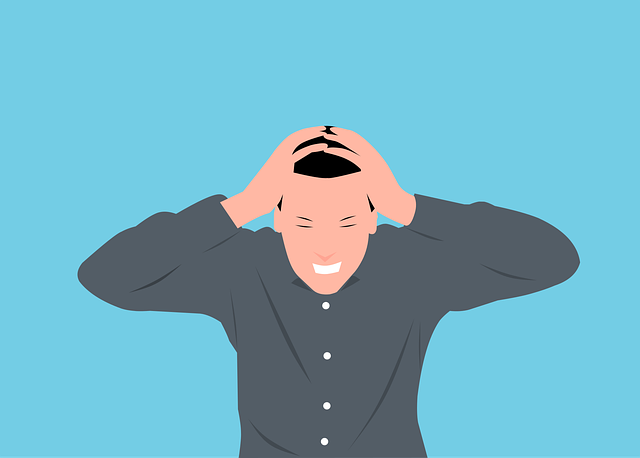Stress relief therapy leverages cognitive-behavioral techniques to empower individuals in managing and overcoming stress. It begins with identifying triggers through journaling, followed by strategies like cognitive restructuring to challenge negative thoughts, mindfulness practices for present-moment awareness, relaxation techniques for calmness, and behavioral activation through enjoyable activities. Creating a personalized plan incorporating these elements offers tailored solutions for effective stress management, improving mental well-being and quality of life.
Stress relief therapy is a powerful tool for navigating life’s challenges. This comprehensive guide explores behavioral stress intervention, offering insights into various effective strategies. From identifying daily triggers to mastering techniques like mindfulness and cognitive restructuring, we demystify stress management. Learn how relaxation exercises and behavioral activation can alleviate stress, foster well-being, and help you create a personalized plan for lasting peace of mind. Discover the steps to integrate stress relief therapy seamlessly into your routine and embrace a calmer, more balanced life.
Understanding Behavioral Stress Intervention: An Overview

Behavioral stress intervention focuses on modifying individuals’ responses to stressful situations, aiming to reduce negative effects and promote well-being. This approach is rooted in behavioral therapy, which emphasizes the connection between thoughts, feelings, and behaviors. By understanding and changing maladaptive patterns, stress relief therapy empowers individuals to cope more effectively with challenging circumstances.
It involves various techniques such as cognitive restructuring, relaxation exercises, and exposure therapy. Cognitive restructuring helps individuals challenge and reframe negative thoughts, while relaxation exercises like deep breathing or mindfulness meditation reduce physiological arousal. Exposure therapy gradually exposes people to feared situations in a safe setting, helping them overcome anxiety and build resilience. These interventions are designed to be practical and applicable in daily life, offering lasting stress management skills for improved mental health.
Identifying Triggers: Recognizing Stressors in Daily Life

Identifying triggers is a crucial step in behavioral stress intervention and stress relief therapy. It involves becoming more aware of daily life stressors that can cause emotional distress. These triggers might be specific situations, people, places, or even thoughts that set off feelings of anxiety or stress. By keeping a journal to track these moments, individuals can start to recognize patterns and identify the root causes of their stress.
This process allows for a more proactive approach to managing stress. Once recognized, triggers can be addressed through various coping mechanisms and stress-reducing techniques. Whether it’s changing one’s reaction to a trigger or avoiding certain situations, understanding these stressors is key to developing effective strategies for long-term stress relief.
Techniques for Stress Management: Cognitive and Behavioral Strategies

Stress management is a crucial aspect of maintaining good mental health, and cognitive and behavioral strategies offer powerful tools for achieving stress relief. Cognitive reframing involves identifying and challenging negative thought patterns that contribute to stress. By changing the way individuals interpret and respond to stressful situations, they can reduce their emotional impact. For example, reframing a challenging task as an opportunity for growth can shift the mindset from anxiety to excitement, reducing perceived stress levels.
Behavioral strategies, such as mindfulness meditation and progressive muscle relaxation, focus on altering actions and responses to stress. Mindfulness encourages individuals to stay present and non-judgmentally aware of their thoughts and feelings, helping them detach from stressful situations. Progressive muscle relaxation involves systematically tensing and relaxing different muscle groups, which can reduce physical tension and promote a sense of calm. These techniques offer practical ways to manage stress in daily life, providing individuals with effective tools for self-care and improved well-being.
The Role of Relaxation Techniques in Stress Relief Therapy

Relaxation techniques play a pivotal role in stress relief therapy, offering individuals effective tools to manage and mitigate their stress levels. These practices are designed to induce a state of deep calmness and relaxation, counteracting the physiological and psychological effects of stress. Techniques such as progressive muscle relaxation, deep breathing exercises, and mindfulness meditation have been extensively studied and proven to reduce anxiety, lower blood pressure, and improve overall well-being.
Incorporating these methods into therapy sessions allows for a holistic approach to stress relief. By teaching clients sustainable coping mechanisms, therapists empower them to navigate stressful situations more effectively. This not only enhances their ability to handle immediate stressors but also builds resilience, enabling individuals to manage long-term stress and promote better mental health outcomes in the context of stress relief therapy.
Mindfulness Practices: Cultivating Present-Moment Awareness

Mindfulness practices play a pivotal role in behavioral stress interventions, offering a powerful tool for managing and reducing stress levels. By cultivating present-moment awareness, individuals can learn to focus their attention on the here and now, rather than dwelling on past events or worrying about the future. This simple yet profound shift helps to calm the mind and reduce reactivity to stressful triggers.
In the context of stress relief therapy, mindfulness involves techniques such as deep breathing exercises, meditation, and body scans, which encourage individuals to observe their thoughts and emotions without judgment. Regular practice can lead to improved emotional regulation, enhanced focus, and a greater sense of inner peace, ultimately contributing to better overall well-being and resilience in the face of stress.
Cognitive Restructuring: Challenging Negative Thoughts

Cognitive restructuring is a powerful tool in behavioral stress interventions, focusing on challenging and changing negative thought patterns that contribute to stress. This technique recognizes that our thoughts directly influence our emotions and behaviors. When individuals identify stressful situations, they often experience automatic negative thoughts (ANTs), such as “I can’t handle this” or “Everything is going wrong.” Cognitive restructuring aims to replace these ANT’s with more realistic and positive ones, like “I’ve faced challenges before and can manage this” or “This is a difficult situation, but I have resources to help me cope.”
By actively questioning and reframing negative thoughts, individuals can reduce the intensity of their emotional response. This process involves examining evidence for and against these thoughts, identifying cognitive distortions (e.g., all-or-nothing thinking), and learning to accept that emotions and thoughts are temporary. Through this structured approach, stress relief therapy becomes a collaborative journey where individuals gain insights into their thought processes, fostering resilience and improved coping mechanisms.
Behavioral Activation: Engaging in Pleasing Activities

Behavioral Activation is a key component of stress relief therapy, emphasizing engaging in activities that bring pleasure and meaning to one’s life. This approach encourages individuals to participate in behaviors that enhance well-being and can help break the cycle of stress and negative thought patterns. By scheduling enjoyable activities, such as hobbies, social interactions, or physical exercises, into their daily routines, individuals can improve their mood, reduce anxiety, and increase overall satisfaction.
This strategy focuses on the power of positive experiences to counteract the effects of chronic stress. When people invest time in activities they find rewarding, it promotes a sense of accomplishment, boosts self-esteem, and fosters a more positive outlook. Behavioral Activation is a practical tool that empowers individuals to take control of their mental health by making conscious choices to engage in activities that promote relaxation, happiness, and overall resilience.
Creating a Personalized Stress Management Plan

Creating a personalized stress management plan is a proactive step towards enhancing mental well-being and fostering resilience. This tailored approach recognizes that every individual experiences and copes with stress differently. Through self-reflection, one can identify unique triggers and develop strategies that resonate with their specific needs. A comprehensive plan may include incorporating mindfulness practices like meditation or deep breathing exercises into daily routines to immediately alleviate tension. Additionally, setting realistic goals, engaging in regular physical activity, and maintaining a balanced diet are integral components of managing stress effectively.
Stress relief therapy offers valuable tools to customize these strategies further. Techniques such as cognitive-behavioral therapy (CBT) help individuals challenge negative thought patterns contributing to stress. By combining personalized plans with evidence-based therapies, one can create a robust framework for managing and reducing stress levels, leading to improved overall health and quality of life.
Integrating Stress Relief Therapy into Daily Routine

Integrating stress relief therapy into daily routines can significantly enhance overall well-being. This involves dedicating consistent time for activities that promote relaxation and calmness, such as mindfulness exercises, deep breathing techniques, or engaging in hobbies like painting or gardening. By incorporating these practices into a structured schedule, individuals can better manage their stress levels throughout the day, fostering a sense of balance and tranquility.
A key aspect of successful integration is making stress relief therapy a non-negotiable part of one’s routine, much like brushing teeth or exercising. This might mean setting aside 15 minutes each morning for meditation or engaging in light stretching after work. Over time, these practices become as natural and beneficial as any other daily habit, contributing to improved mental health and resilience against stress.
